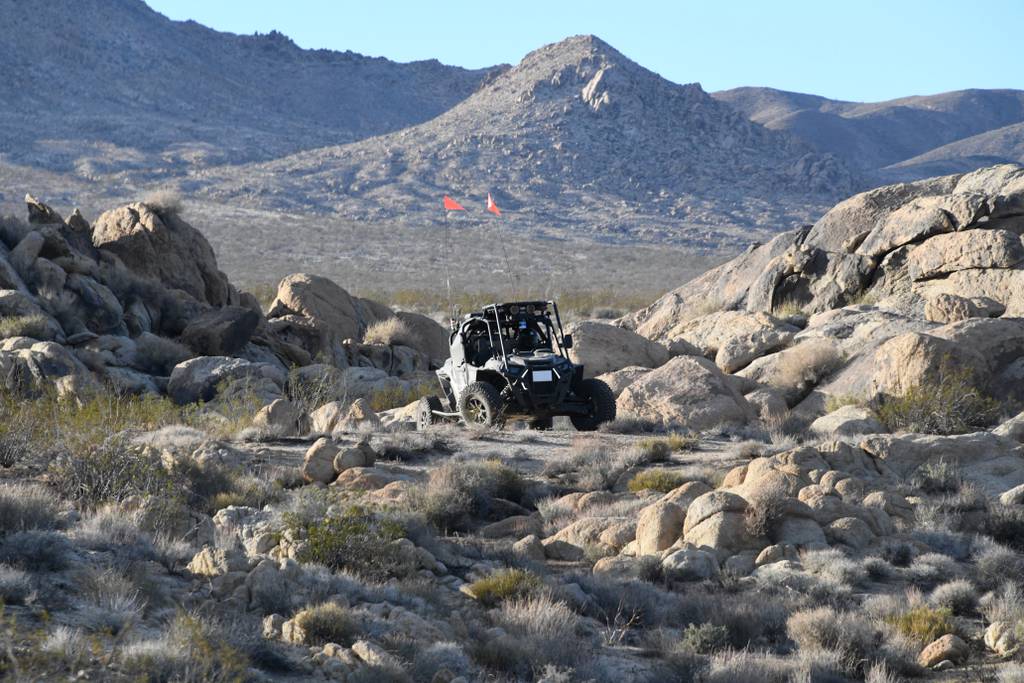WASHINGTON — With one field experiment under its belt, the Pentagon’s research and development agency began a second round of off-road testing for its autonomous vehicle program, this time turning to the steep hills of central California.
The Robotic Autonomy in Complex Environments with Resiliency, or RACER, project aims to develop autonomous uncrewed ground vehicles to maneuver in unstructured off-road terrains. This round of testing began last week at Camp Roberts, located midway between Los Angeles and San Francisco, and will conclude on Sep. 27.
“One of the things that RACER is trying to do is push the speed, and we want to ultimately get to speeds that are faster than what combat vehicles are doing,†said Stuart Young, the project’s program manager, in an interview with C4ISRNET. “In order to do that...you have to see further out; you have to understand the world further out, and that’s particularly challenging in a hilly off-road environment.â€
Researchers with the Defense Advanced Research Projects Agency previously tested the vehicles in a Mojave desert terrain this past spring at Fort Irwin. During the experiment, they focused on gauging the vehicles’ perception capability, testing whether the automobiles had the ability to differentiate between different types of terrain, such as grass, sand and rocks — all of which appear similar to a robot.
This time, DARPA is looking to see if the vehicles can plan ahead when confronted with objects like trees, hills and ditches that require the technology to see further away and understand the world farther out.
By giving the vehicles the ability to predict more about the world in front of them, they’ll be able to make the same calculations humans do about how to interact with — and go around — the objects in front of them.
Unlike many other vehicle programs underway at the Pentagon, Young said RACER isn’t focused on adding sensors. Researchers with the program use the same sensors they started out with when RACER began, choosing instead to rely on training machine learning approaches, such as neural networks, which mimic the human brain through a set of algorithms.
Robots have historically struggled with speed due to unpredictable environments that may feature obstacles or circumstances the autonomous technology wasn’t prepared to address, causing them to an error in their behavior or stop entirely.
What’s worse for robots, water or trees?
Contrary to popular thinking among the public, Young said the most problematic obstacle isn’t trees but rather water features and points where the ground drops off, or “negative obstacles.†The dipping points present a falling or tipping hazard for the robot, especially if the vehicle is traveling at high speeds.
“We need to be autonomous vehicles need to be out in front of the formation, not lagging behind,†Young said. “That’s the recognition that RACER had, which was robots are too slow, and they’re too brittle to be effective.â€
The program ultimately wants to make its vehicles run at similar speeds as combat vehicles.
While autonomous cars made by Tesla and other commercial companies run at the same speeds as cars driven by people, usually up to 80 mph, combat vehicles, run much slower. The Army’s Bradley Fighting Vehicle, for example, typically has a maximum speed of between 30 and 40 mph depending on the model.
“We don’t have any structure in the environment that we can depend on, so we’re not going on roads, or even on trails,†Young said. “We’re literally going across the terrain.â€
The RACER program runs through FY2025 and is divided into two phases, the first of which concludes next March. By the end of Phase I, researchers want the vehicles to reach just over 11 mph. At the end of the program, Young said they’re aiming for 19 mph.
The Camp Roberts experiment is number two of eight. While some future experiments will return back to the same terrains to compare measurements and to test improvements, others will take researchers to different biomes, such as terrains with more lush or swampy vegetation, Young said.
“In some environments, we’re doing better than we expected,†he said. “We’re pushing into environments where we still have lots of challenges and exploring those spaces earlier than I expected.â€
Catherine Buchaniec is a reporter at C4ISRNET, where she covers artificial intelligence, cyber warfare and uncrewed technologies.








